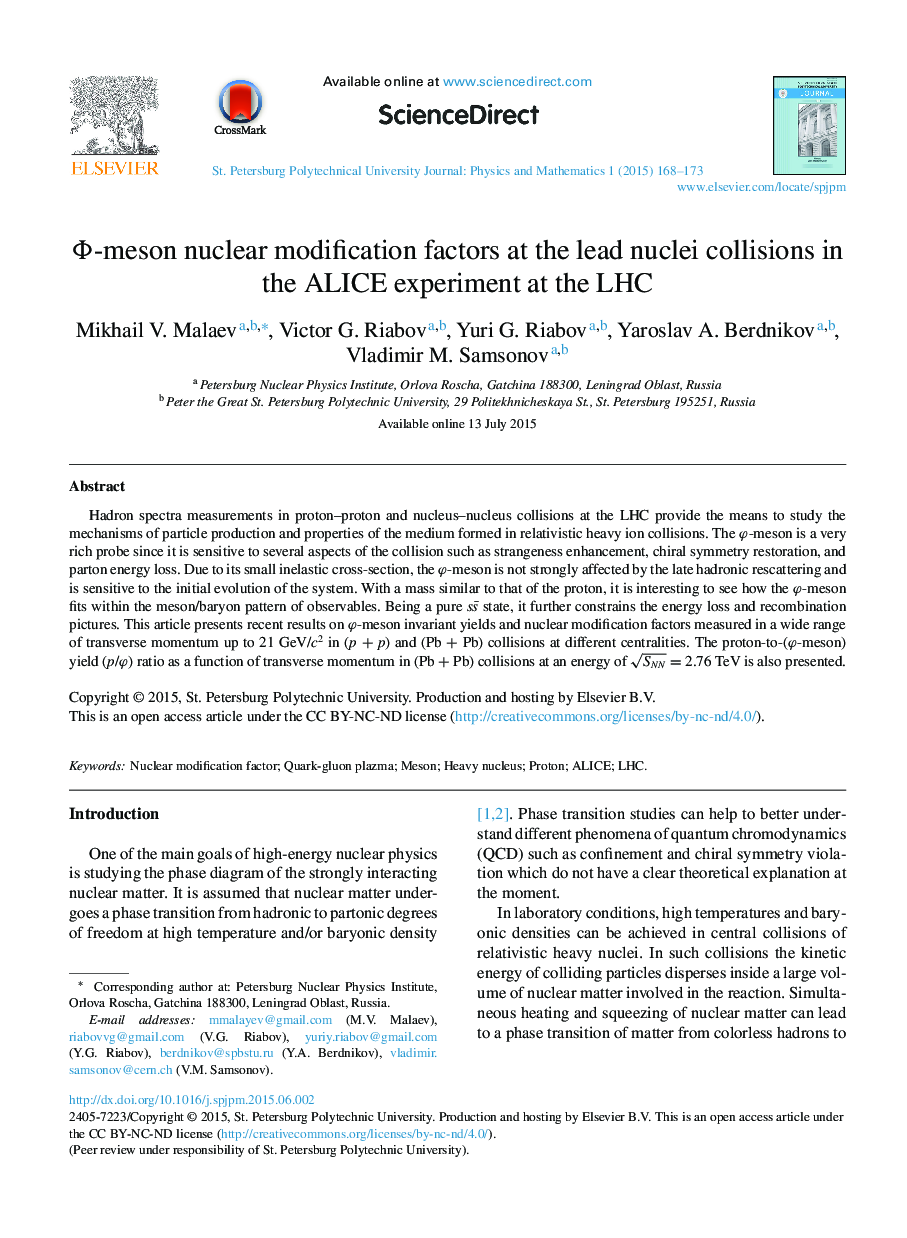| Article ID | Journal | Published Year | Pages | File Type |
|---|---|---|---|---|
| 1785291 | St. Petersburg Polytechnical University Journal: Physics and Mathematics | 2015 | 6 Pages |
Hadron spectra measurements in proton–proton and nucleus–nucleus collisions at the LHC provide the means to study the mechanisms of particle production and properties of the medium formed in relativistic heavy ion collisions. The φ-meson is a very rich probe since it is sensitive to several aspects of the collision such as strangeness enhancement, chiral symmetry restoration, and parton energy loss. Due to its small inelastic cross-section, the φ-meson is not strongly affected by the late hadronic rescattering and is sensitive to the initial evolution of the system. With a mass similar to that of the proton, it is interesting to see how the φ-meson fits within the meson/baryon pattern of observables. Being a pure ss¯ state, it further constrains the energy loss and recombination pictures. This article presents recent results on φ-meson invariant yields and nuclear modification factors measured in a wide range of transverse momentum up to 21 GeV/c2 in (p + p) and (Pb + Pb) collisions at different centralities. The proton-to-(φ-meson) yield (p /φ) ratio as a function of transverse momentum in (Pb + Pb) collisions at an energy of SNN = 2.76 TeV is also presented.
